System Buyers Guide: PCs for Under $1000
by Wesley Fink on December 29, 2008 3:00 AM EST- Posted in
- Guides
AMD Budget
Leaving the entry-level sector behind, and with a budget of up to $1000, our options increase significantly. Our aim here is to provide a configuration that allows for a nice balance of performance at stock speeds. This doesn't mean you have to spend the entire $1000 though, as prices have dropped in the past year and performance for the dollar has definitely increased. In fact, both budget systems are under $850 complete, giving you the option to increase graphics power or go for a larger monitor (or both) and still be around $1000.
The assembled system is balanced for a wide variety of computing tasks, but final tweaks can tilt it toward gaming or graphics for example, if that is what you aim for. Generally we consider PC gaming rigs to begin at the next category, or the low end of midrange, but adding a more powerful graphics card and a larger monitor will definitely make one of these budget systems a good choice for entry gaming at around $1000. If that is your goal take a look at our Holiday 2008 GPU and Holiday 2008 Display guides for help in selecting a graphics card and display for your price point.
| AMD Budget PC | ||
| Hardware | Component | Price |
| Processor | Phenom 8750 Black Edition (Tri-core 2.4GHz 95W 3x512KB L2) |
$120 |
| Cooling | CPU Retail HSF | - |
| Video | Powercolor AX4830 512MD3-H Radeon HD 4830 | $85 |
| Motherboard | Biostar TForce TA790GX3 A2+ | $110 |
| Memory | Crucial Ballistix 4GB DDR2-800 Kit (BL2KIT25664AA80A) | $48 |
| Hard Drive | WD Caviar GP WD6400AACS 640GB | $85 |
| Optical Drive | Samsung 22X DVDRW/DL SH-S202G | $25 |
| Audio | Onboard | - |
| Case | Antec Three Hundred ATX Mid-Tower Case | $60 |
| Power Supply | OCZ ModXStream Pro OCZ400MXSP 400W ATX12V V2.2 Modular Active PFC Power Supply | $35 |
| Display | Acer X193W+BD 19" 5ms Widescreen LCD Monitor (1680x1050) | $130 |
| Speakers | Logitech R-20 12 Watts RMS 2.1 Multimedia Speaker | $18 |
| Input | Microsoft CA9-00001 PS/2 Standard Keyboard and Optical USB/PS2 Mouse - OEM | $16 |
| Operating System | Microsoft Vista Home Premium OEM | $99 |
| Bottom Line | $831 | |
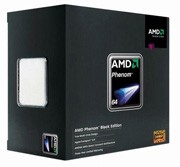 |
While the GPU is the most important factor in gaming performance, the CPU is also a factor - particularly below 1280x1024. To make sure the CPU is not a bottleneck now, or in the near future should you upgrade your PC, a Black Edition Phenom X3 is the CPU of choice. The Phenom 8750 Black Edition has an unlocked multiplier should you choose to overclock, which makes overclocking as simple as it gets. It is rated at 2.4GHz 95W at stock, with 3x512KB L2 cache.
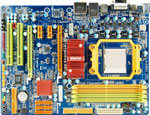 |
We've paired the Phenom 8750 Black Edition with the Biostar TForce TA790GX3 A2+, a perfect match for those looking to squeeze as much performance out of their money as possible. The Biostar is loaded with overclocking features, including integrated AMD HD 3300 graphics with an HDMI/DVI interface with 1080P HD support. This adds up to very decent performance using the onboard graphics. In addition to AM2+ support, Biostar claims future AM3 CPU support. Biostar includes 128MB DDR2 sideport memory for improved GPU performance, Realtek ALC 888 HD audio, Gigabit LAN, 16GB memory support, six 3Gb/s ports capable of RAID 0/1/10/5, 10 USB ports, two PCI-E x16 slots (dual x8 CrossFire), two PCI-E x1 slots, and two PCI slots. The BIOS caters to the casual overclocker and this board performs very well in a variety of tests. .
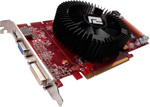 |
Graphics are provided by the PowerColor Radeon HD 4830. 4830 video cards are normally in the $110 to $130 price range, so $85 for an Radeon 4830 after rebate is an incredible value and allows the graphics to be kicked up to a higher level. At low to moderate resolutions (1024x768 to 1680x1050) gamers using this class of GPU hardware are all but guaranteed to be able to play with all the effects and high image quality options enabled. That makes the 4830 a good match to the other components in our Bargain systems.
We're going with the Ballistix 4GB DDR2-800 kit for $48. However, there are many memory options at great prices today. Quality DDR2-800 RAM from Corsair, OCZ, G.Skill, Mushkin, and GeIL are available on any of the major online retailers. Just be sure to look for RAM with timings of 4-4-4-12 - or even better with a little luck.
The hard drive receives a slight capacity upgrade to a 640GB Western Digital Caviar. If you'd prefer a longer warranty, look at Seagate, which includes a 5-year warranty on most of their drives for a few dollars more. The DVD burner remains the same Samsung 22X.
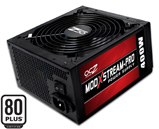 |
The case receives an upgrade with the selection of the well-regarded Antec Three Hundred and a bargain OCZ ModXStream Pro 400W power supply. OCZ power supplies have a great reputation for solid performance and good warranty support, and $35 after rebate is a great price for a quality power supply.
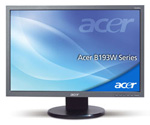 |
The LCD display was a bit of a conundrum. We selected the high resolution Acer X193W+BD for $130. Where else can you find a 19" monitor with the 1680x1050 resolution more common on a 22" screen? If you prefer a larger screen you can find a 22" widescreen for just $40 more, but the resolution will be the same.
If you plan to do a lot with 1080P HD you should consider a monitor that will support the 1080P resolution of 1920x1080. Generally this is the resolution expected of 24" LCD Monitors, which start at around $300. That is a great price compared to the $1000 of just a couple of years ago, but there are even cheaper options available.
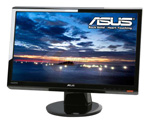 |
The new class of 21.5" monitors feature a true 1080P resolution and we found the Acer H213H 21.5" HDMI 16:9 and the ASUS VH222H Black 21.5" HDMI Widescreen both selling for $200 with free shipping at Newegg. That is just a little bit more for full HD 1920x1080 native resolution.
 |
If you want more video power for gaming, you can upgrade to the Radeon HD 4850 as the start of true HD gaming for just $45 more ($130). An upgrade to the Radeon HD 4870 512MB can be as little as $180 (just $95 more). The $130 and $180 cards still keep your total well below $1000. You can even upgrade to the $180 4870 and include the full HD 21.5" Acer or ASUS monitor and still be at $996 to $1001. That's a very capable gaming system for $1000 that can do plenty of tasks besides gaming should the need arise.










38 Comments
View All Comments
Wixman666 - Monday, December 29, 2008 - link
Nonsense, you're forgetting that they are posting builds that are user friendly for the general public. 99% of the people in the US couldn't install Linux if their life depended on it. Even for many supposed "power users" it is not exactly friendly.While it is indeed a good alternative, Linux is still just not for the mainstream.
You guys also neglected to choose Vista 64 for forward thinking. Buying a 32 bit OS today is like throwing away money. If I wanted a 32 bit OS I'd buy XP home, pro, or media center.
n0nsense - Tuesday, December 30, 2008 - link
People in US do install and use Linux like in any other place.Dumb
Anyway you will install some OS and installing Vista is at least longer process at the first time and "find the drivers CD" on next time since even NIC wont work out of the box in most cases (XP much worse with default drivers).
And usability, if my 60 years old (in average) parents can use it without calling me few times a week (like they did with XP), anyone can :)
strikeback03 - Monday, December 29, 2008 - link
I'd guess that most users considering assembling their own computers (and for that matter most users who can put a CD in the drive) could install Ubuntu. And with reasonably mainstream hardware they might even have it run flawlessly. If you are willing to use the forums and such to find help you probably can get it to run on just about any system. The problem is that lots of people want it to just work, and you never know what you are getting with each new release. I have been using Ubuntu since 6.10 on my desktop and 7.04 on my laptop. Each release I have installed on the desktop has required new kernel flags to work around problems (noapic, nolapic, all_generic_ide, etc), and the 7.04, 7.10, and 8.04 LiveCDs didn't even boot without help. With 8.10 they seem to have fixed all that, I still haven't gotten around to actually installing it but it runs perfectly off a flash drive. My laptop (Thinkpad T43) , OTOH, had zero problems with any of the releases prior to 8.10, everything did just work. So I went ahead and installed 8.10 without any trial period, and it broke Wireless support, so that it would constantly disconnect from the router, then most times ask for the password on reconnecting and sometimes refusing to reconnect at all. Obviously not acceptable, so I went back to 8.04.I have installed Ubuntu on several other systems at work without problems (including one which is almost identical to my troubled desktop), but the point is that a lot of users probably don't want the uncertainty of whether their hardware will be happy with the software or not. Not that Vista has a spotless hardware support history, but most users probably feel more comfortable finding support for that than Linux.
JarredWalton - Monday, December 29, 2008 - link
Actually, we didn't specifically state whether you should buy the 64-bit or 32-bit version, though we did mention that 64-bit is the way to go if you run 4GB or more RAM. There's only a couple applications I use regularly that utterly fail under 64-bit Vista: Dragon NaturallySpeaking (still waiting for their 64-bit update!) and Gametap (a bunch of the games fail to install/work under 64-bit Vista). So it's still not 100% the same as 32-bit, but I do run 64-bit for my primary gaming PC. My work PC remains 32-bit until the Dragon issue is fixed.sprockkets - Monday, December 29, 2008 - link
If you can assemble a computer, you can install Linux.By the way, that WD Green drive has NEVER been a variable speed drive; it operates at 5400rpm ALL the time. WD just doesn't want the public to fret over the fact that it is a 5400rpm drive so they obfuscate this fact as much as possible.
cbutters - Monday, December 29, 2008 - link
I was just about to post that the WD wasn't a variable speed drive, but I see you have commented on it already, therefore, I second your post.n0nsense - Monday, December 29, 2008 - link
Truly, I can't understand why 20% of computer cost should be spent on OS.Yes, you can argue that other OS does not really support ALL games.
But when talking about Internet/Office/Media non professional use (in professional people can choose Mac) for what f... reason should person to spend this 100 USD on something really not needed. Actually it's more then 100$ since they gonna need "good anti everything" soft which will slow down their already not so fast computers.
On the other hand they can opt for something like Mythbuntu for HTPC, or Ubuntu for normal desktop and spend saved money on something better like tripling disk space, getting decent dedicated graphics and other things.
And i'm disappointed that you don't even mention this.
and please, add preview button for posts :)
DerwenArtos12 - Monday, December 29, 2008 - link
Why didn't you all use the Corsair ram you were raving about in your memory guide, it's only a couple bucks more?Wesley Fink - Tuesday, December 30, 2008 - link
We certainly like the Corsair memory as well. As we said in the Buyers Guide:"RAM prices as a whole are certainly in the commodity category as of late. We recommended the Kingston 4GB DDR2-800 kit, but you could just as easily choose OCZ, G.Skill, Corsair, Crucial, GeIL, Patriot, or any other quality DDR2-800 name and shop for the memory based on a combination of price and the company's support reputation."
BernardP - Monday, December 29, 2008 - link
I have had a system based on Asus M3N78-VM GeForce 8200 motheboard for a month. I have all the latest chipset, audio (NVidia + VIA) and video drivers installed. I have tried all possible audio settings and configurations, in WinXP and BIOS. Despite this, I have been unable to get audio through HDMI, although the HDMI video is perfect @ 1280x720.Searching on the net, this seems to be a widespread problem. Some users report they have HDMI audio working, but they don't seem to have done anything special to make it work.
The fundamental problem is that, on my system, there is no visible option to select HDMI audio, either in Hardware Manager or Control Panel/Sounds.
Anyone knows the sure-fire recipe to enable audio through HDMI on the 8200/8300 chipset?